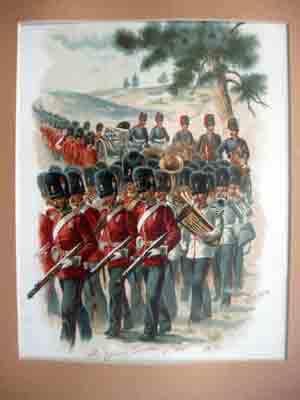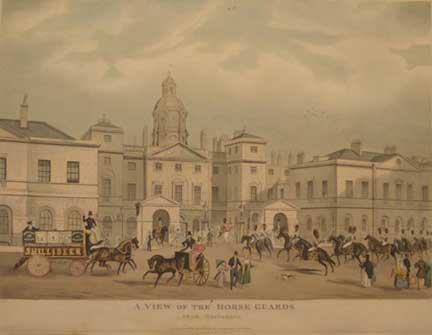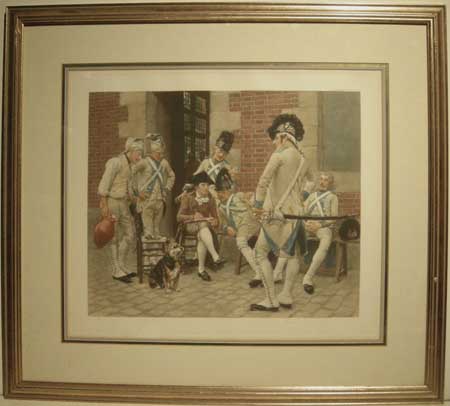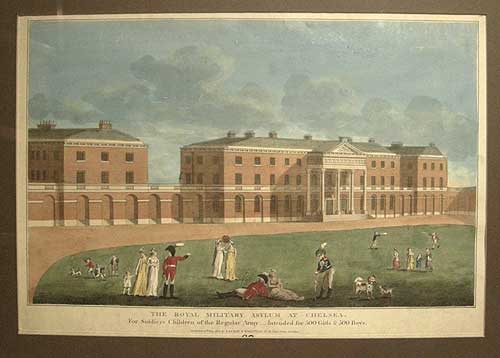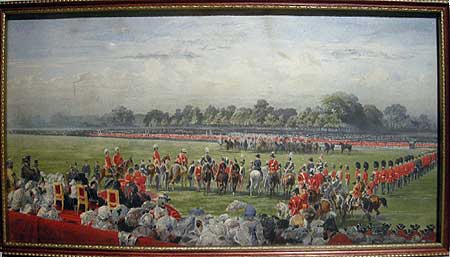
War
Sir Edwin Henry Landseer RA. 1802 - 1873
Following Lady Butler's concept of depicting images that portrayed
the realities of war, rather than its glory, Landseer tried his
hand at the genre and produced this splendid, if tragic, depiction
simply entitled War.
This strongly emotive image depicts a scene immediately following
an explosion of ordnance on or adjacent to a building. Caught by
the blast and falling masonry two lifeguards lie fallen, one of
their two horses also succumbed, but the other charger vainly struggles
to maintain life in the midst of destruction, as terrified, it
snorts and tries to rise, disentangling itself from its fallen
trumpeter guardsman.
The exquisite detail in the rendering of the horse where veins
in its rump pulse and intricacies of equipment such as sheepskin
saddle cover, bridle, edgewear, and embroidered trumpet cloth are
testament to the consummate skill of Landseer as an artist, noted
for his brilliant portrayal of animals, even if this image does
pander to the Victorian taste for sentiment.
Landseer entered the RA. school at 14 where he excelled at animal
depiction, improving his knowledge with anatomy lessons, he was
elected a member in 1831. His visits to the Scottish highlands
and his many pictures of highland animals & sports helped establish
a vogue for Scottish subjects.
Greatly admired by Queen Victoria, whom he taught to etch, she
acquired many of his works. He was also commissioned to model the
lions that surround Nelson's column in London. Knighted in 1850.
his last years were marred by depression especially after having
being hit by an omnibus and the nature of his subjects became darker
and he became obsessed with the suffering of animals.
He was offered the Presidency of the RA. in 1865, but declined.
His works may be found in many National & municipal collections
and his many engravings still remain very popular.
Mixed media Mezzotint, Etching.
Click for more information on the
printing technique.
Proof before letters, Matted 22" X 33 1/4" Ref. AG.17
/LDV/ snd VOL. PRICE CODE D: Click
Here for Pricing Details SOLD

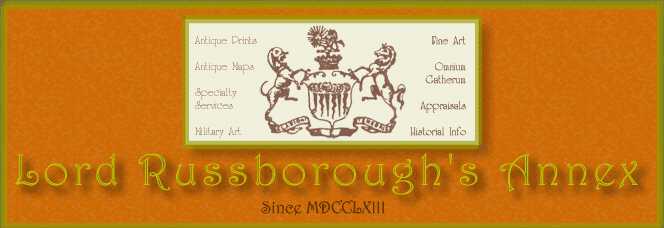
-fullmod.jpg)
